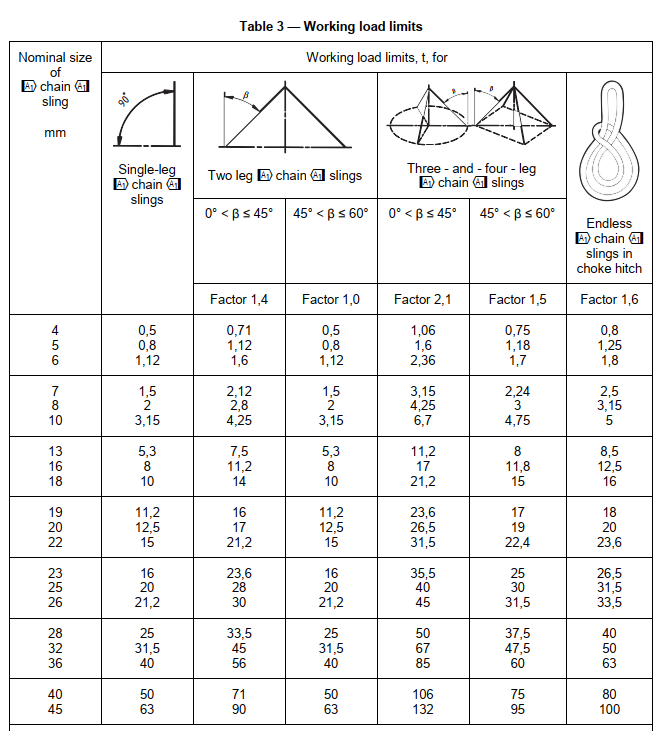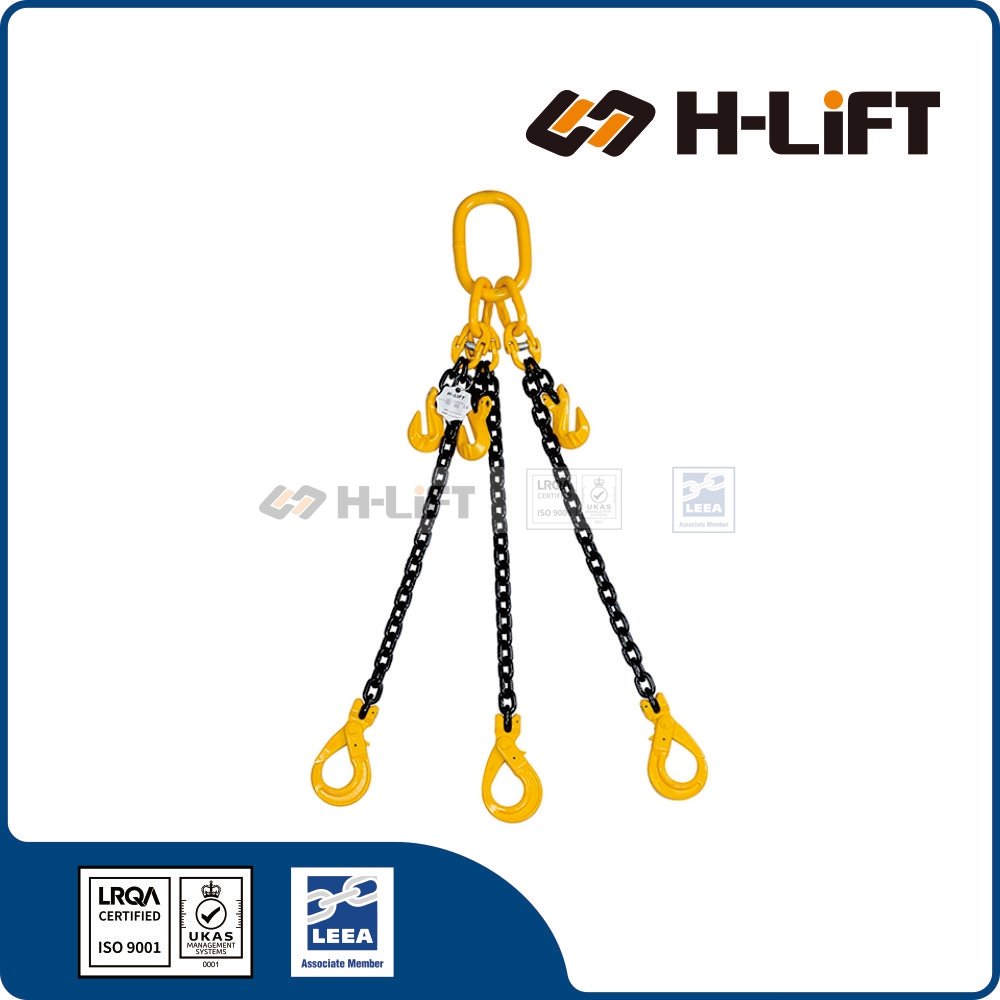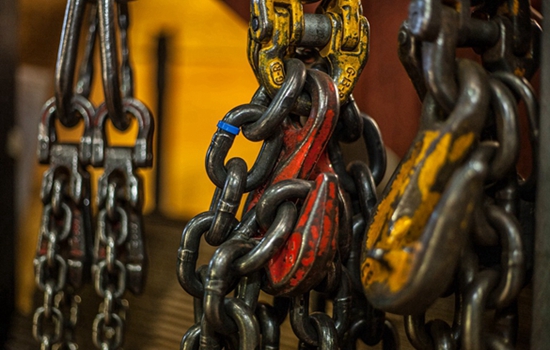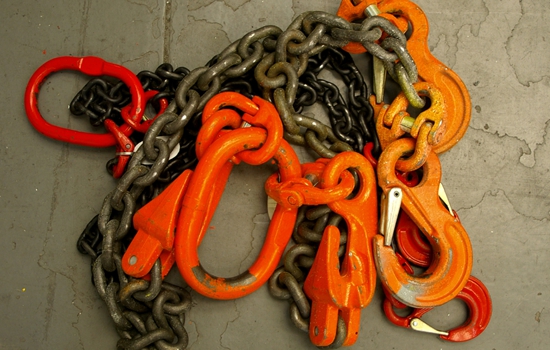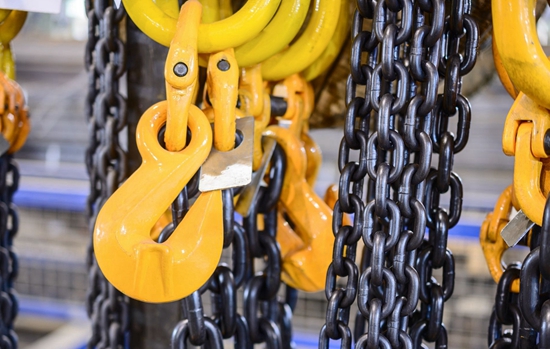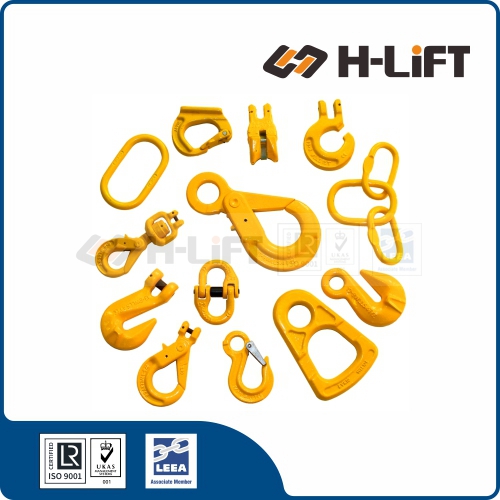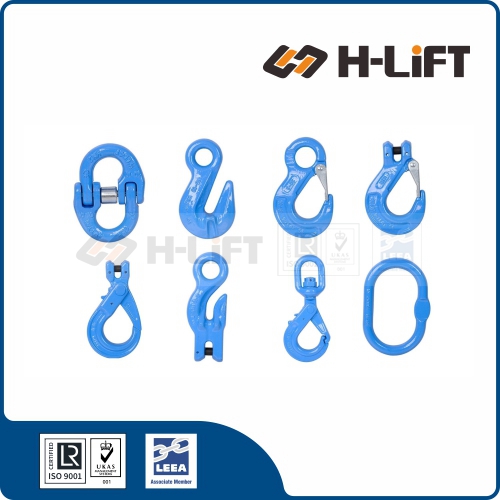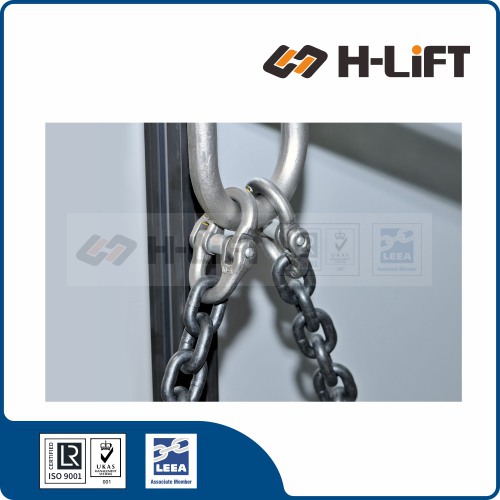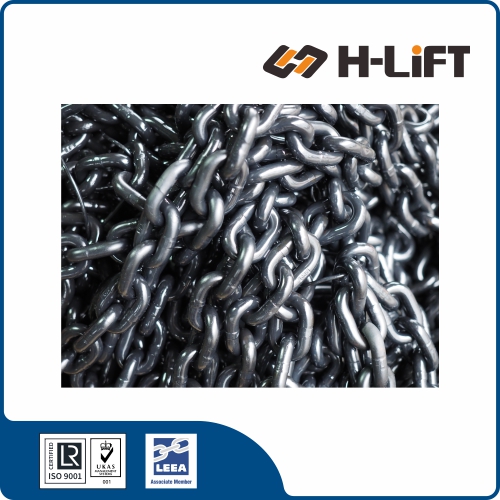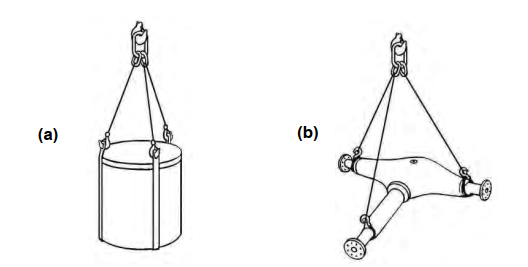The Machinery Directive stipulates that where chain with welded links is used for lifting accessories it is to be of short line type and for the purposes of this standard this is chain having a ratio of nominal pitch to nominal size of 3:1. This European Standard specifies the requirements related to safety, methods of rating and testing of single-, two-, three-, four-leg and endless chain slings assembled by:
a) mechanical joining devices
b) welding
using short link grade 8 medium tolerance lifting chain conforming to EN 818-2 together with the appropriate range of components of the same grade.
chain sling assembly consisting of a chain leg or chain legs joined to upper and lower terminals for attaching loads to the hook of a crane or other lifting machine.nominal size of chain sling
The nominal size of short link chain, in millimetres, used in the manufacture of the chain sling.
nominal grade of chain sling
For the purpose of designation in accordance with annex C, is the same as the grade of the short link chain used in the manufacture of the chain sling i.e. 8.
master link
A link forming the upper terminal of a chain by means of which the chain sling is attached to the hook of a crane or other lifting machine.
length of a leg
For a finished chain sling, is the length from the lower bearing point of the lower terminal to the upper bearing point of the upper terminal.
intermediate master link
A link used to connect one or two legs of a sling to a master link.
lower terminalA link, hook or other device fitted at the end of a leg of a sling, remote from the master link or upper terminal.
mechanical joining device
A means of connection which does not depend on welding. It may be integral with a component or be a separate component.
joining link
A welded link fitted to the end of a chain to connect it either directly or through an intermediate link to an upper or lower terminal or intermediate master link or in the case of an endless chain sling to the other end of the chain.
intermediate link
A welded link used to form a connection between the terminal and the joining link fitted to the chain.
manufacturing proof force (MPF) of a chain sling
A force applied during manufacture as a test to the whole chain sling or a force applied as a test to a section of chain sling.
working load limit (WLL) of a chain sling
The maximum mass which a sling is authorized to sustain in general lifting service.
master link assembly
assembly consisting of a master link together with two intermediate master links.
